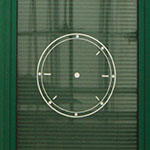Euroacademia Conferences
 Europe Inside-Out: Europe and Europeanness Exposed to Plural Observers (9th Edition) April 24 - 25, 2020
Europe Inside-Out: Europe and Europeanness Exposed to Plural Observers (9th Edition) April 24 - 25, 2020 Identities and Identifications: Politicized Uses of Collective Identities (9th Edition) June 12 - 13, 2020
Identities and Identifications: Politicized Uses of Collective Identities (9th Edition) June 12 - 13, 2020 8th Forum of Critical Studies: Asking Big Questions Again January 24 - 25, 2020
8th Forum of Critical Studies: Asking Big Questions Again January 24 - 25, 2020 Re-Inventing Eastern Europe (7th Edition) December 13 - 14, 2019
Re-Inventing Eastern Europe (7th Edition) December 13 - 14, 2019 The European Union and the Politicization of Europe (8th Edition) October 25 - 26, 2019
The European Union and the Politicization of Europe (8th Edition) October 25 - 26, 2019 Identities and Identifications: Politicized Uses of Collective Identities (8th Edition) June 28 - 29, 2019
Identities and Identifications: Politicized Uses of Collective Identities (8th Edition) June 28 - 29, 2019 The European Union and the Politicization of Europe (7th Edition) January 25 - 26, 2019
The European Union and the Politicization of Europe (7th Edition) January 25 - 26, 2019 7th Forum of Critical Studies: Asking Big Questions Again November 23 - 24, 2018
7th Forum of Critical Studies: Asking Big Questions Again November 23 - 24, 2018 Europe Inside-Out: Europe and Europeanness Exposed to Plural Observers (8th Edition) September 28 - 30, 2018
Europe Inside-Out: Europe and Europeanness Exposed to Plural Observers (8th Edition) September 28 - 30, 2018 Identities and Identifications: Politicized Uses of Collective Identities (7th Edition) June 14 - 15, 2018
Identities and Identifications: Politicized Uses of Collective Identities (7th Edition) June 14 - 15, 2018
The Quest for Identity: Germany and Its Art In the Cold War-Period
-
-

-
Presentation speakers
- Elena Korowin , Karlsruhe University for Arts and Design, Germany
- Download presentation
Abstract:
The aim of this paper is to focus on the ideas that should have been transferred with the help of visual arts in the period after the Second World War. During the Cold War, Germany was a central geographical point of political, social and cultural discourse. Divided and influenced by the Allies, the German government was forced to work fast on new concepts of its own identity in all areas. For the arts, the late 1940s were a time of permanent discussions about which art is the right one to represent the spirit of the “Stunde Null” and to represent the free art of the new West Germany. The first Federal Chancellor Konrad Adenauer strengthened the West integration and at the same time politicians engaged in the cultural sector of the Soviet occupation zone established socialist realism there. Out of this early discussions after the Second World War grew the new ideas of how the Western and Eastern art should be like. The Cold War was even in arts and very often Germany was the place, where the fights were staged. It was an ideological fight between abstract and figurative, humanistic and elitist, communist and capitalist, and finally West and East. These concepts were that strong that part of their heritage is palpable until today in the world of arts. After the collapse of the Soviet Union the ideas of globalization grew steadily, in politics and equally in the art scene. But until now the East-West-Gap in the Arts exists. The examination of famous German artists in comparison to the ones from Eastern Europe will make it obvious. -
Related Presentations

Transitions in Europe's Southern Neighborhoods: Among High Hopes and Rising Worries
- Radoslaw Stanczewski

Europe in Visual Representations of Migration: 'WESTERN UNION: Small Boats' by Isaac Julien
- Katrin Hunsicker

Media Regulation in Montenegro in the EU Association Process
- Dragic Rabrenovic

Constructing the Other/s: Discourses on Europe and Identity in 'First’ and 'Other' Serbia
- Ana Omaljev














